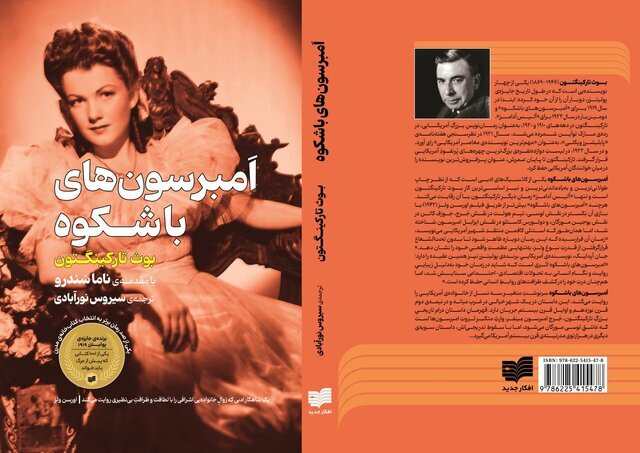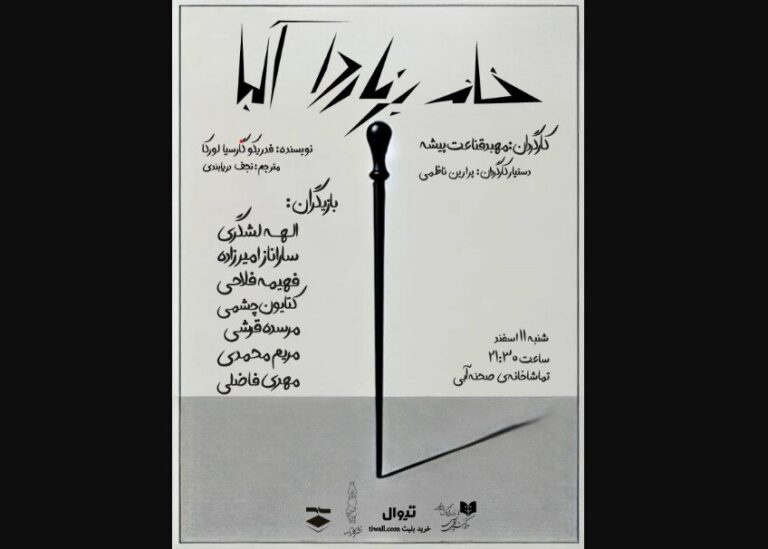Experience the Timeless Classic: ‘The Magnificent Ambersons’ Now Available in Persian!
In an exciting development for literature enthusiasts in Iran, the Persian translation of Booth Tarkington’s acclaimed 1918 novel, “The Magnificent Ambersons,” has officially hit the shelves. This significant release, translated by Sirous Nourabadi and published by Afkar-e Jadid Publications, spans 380 pages and brings this classic work to a new audience.
“The Magnificent Ambersons” is the second installment in Tarkington’s renowned “Growth” trilogy, following “The Turmoil” (1915) and preceding “The Midlander” (1923), which was later retitled “National Avenue” in 1927. This novel not only secured the Pulitzer Prize for Fiction but also delves deeply into themes of wealth, family dynamics, and the societal transformations occurring in early 20th-century America.
Overview of “The Magnificent Ambersons”
Set against the backdrop of the Midwest, the narrative chronicles the rise and fall of the Amberson family, spearheaded by Major Amberson, who amasses his fortune during the prosperous late 19th century. The story centers around:
- George Amberson Minafer: the arrogant and spoiled only child of Isabel, raised in an environment that fosters a sense of entitlement and contempt for others.
- Family Dynamics: The novel intricately explores the relationships within the Amberson family, particularly George’s interactions with his mother’s former suitor, Eugene Morgan, and Lucy, Eugene’s daughter.
- Societal Change: The advent of automobiles symbolizes the conflict between established wealth and the rise of modernity, illustrating the broader themes of change in American society.
As George navigates his relationships, the narrative poignantly highlights the decline of the Amberson family, paralleling his personal failures and the inevitable consequences of his actions. The story serves as a profound commentary on the fragility of social status and the relentless passage of time, making it a timeless reflection on human aspirations and regrets.
Literary Significance and Adaptations
In 1942, “The Magnificent Ambersons” transitioned from page to screen, thanks to the visionary direction of Orson Welles, who also penned the screenplay. This film adaptation remains a significant part of cinematic history, showcasing the novel’s rich themes and complex characters. Decades later, in 2002, a television adaptation was released, further testament to the enduring relevance of Tarkington’s work.
About Booth Tarkington
Newton Booth Tarkington (1869-1946) was a celebrated American novelist and playwright, recognized as one of the few authors to win the Pulitzer Prize for Fiction multiple times, sharing this honor with literary giants like William Faulkner, John Updike, and Colson Whitehead. During the 1910s and 1920s, Tarkington was heralded as the United States’ preeminent author, and many of his stories have been successfully adapted into films, further solidifying his legacy in American literature.
Conclusion
The release of the Persian translation of “The Magnificent Ambersons” opens a new chapter for readers eager to engage with Tarkington’s exploration of familial and societal themes. This novel not only captivates with its rich storytelling but also serves as a lens through which we can examine the complexities of social change and personal growth.
As readers delve into the world of the Amberson family, they will find a narrative that resonates with the timeless struggles of wealth, status, and the relentless march of modernity—a reflection of the broader human experience that remains relevant across generations.
For those interested in exploring this classic, the translated edition is now available in Iranian bookstores, marking an important addition to literary collections and a chance to appreciate Tarkington’s masterful storytelling in a new language.






